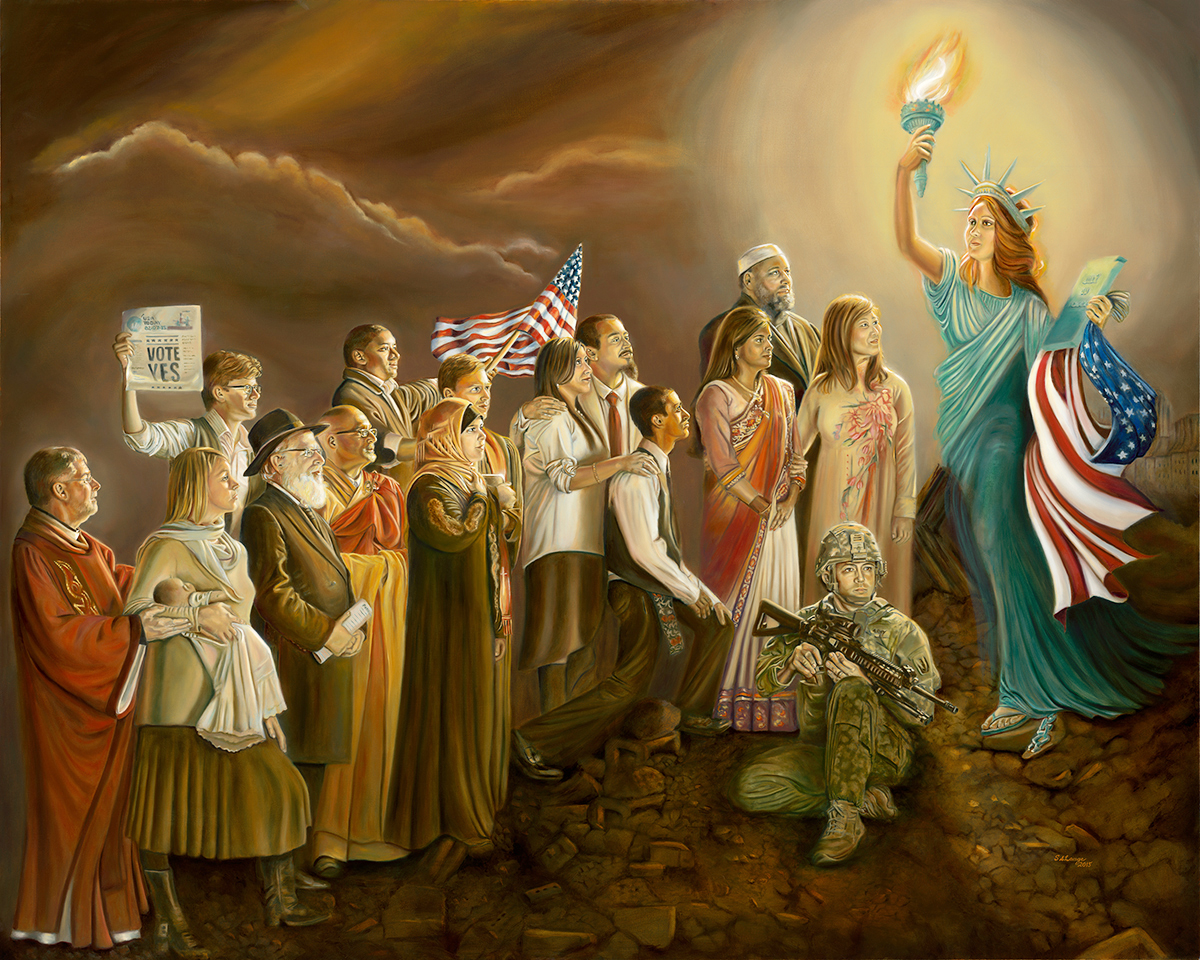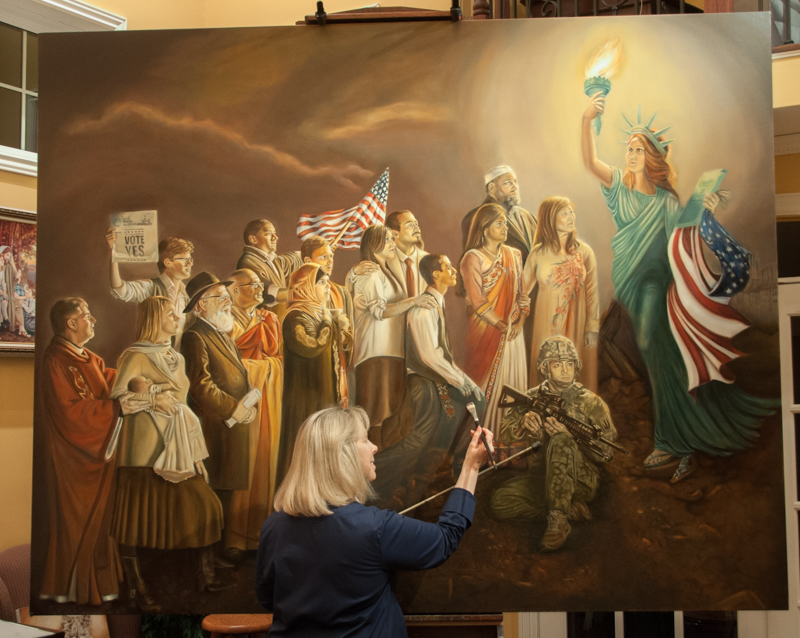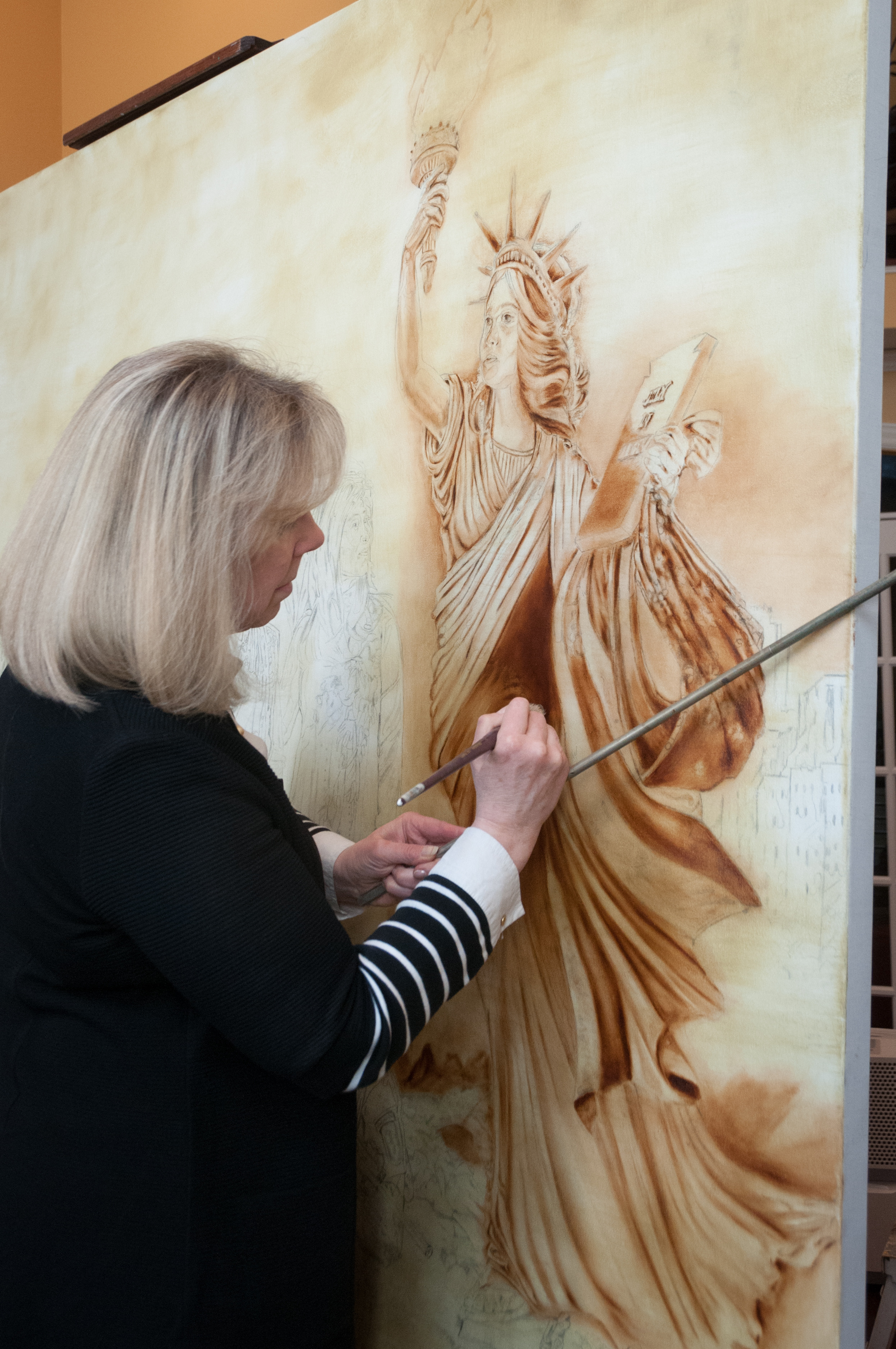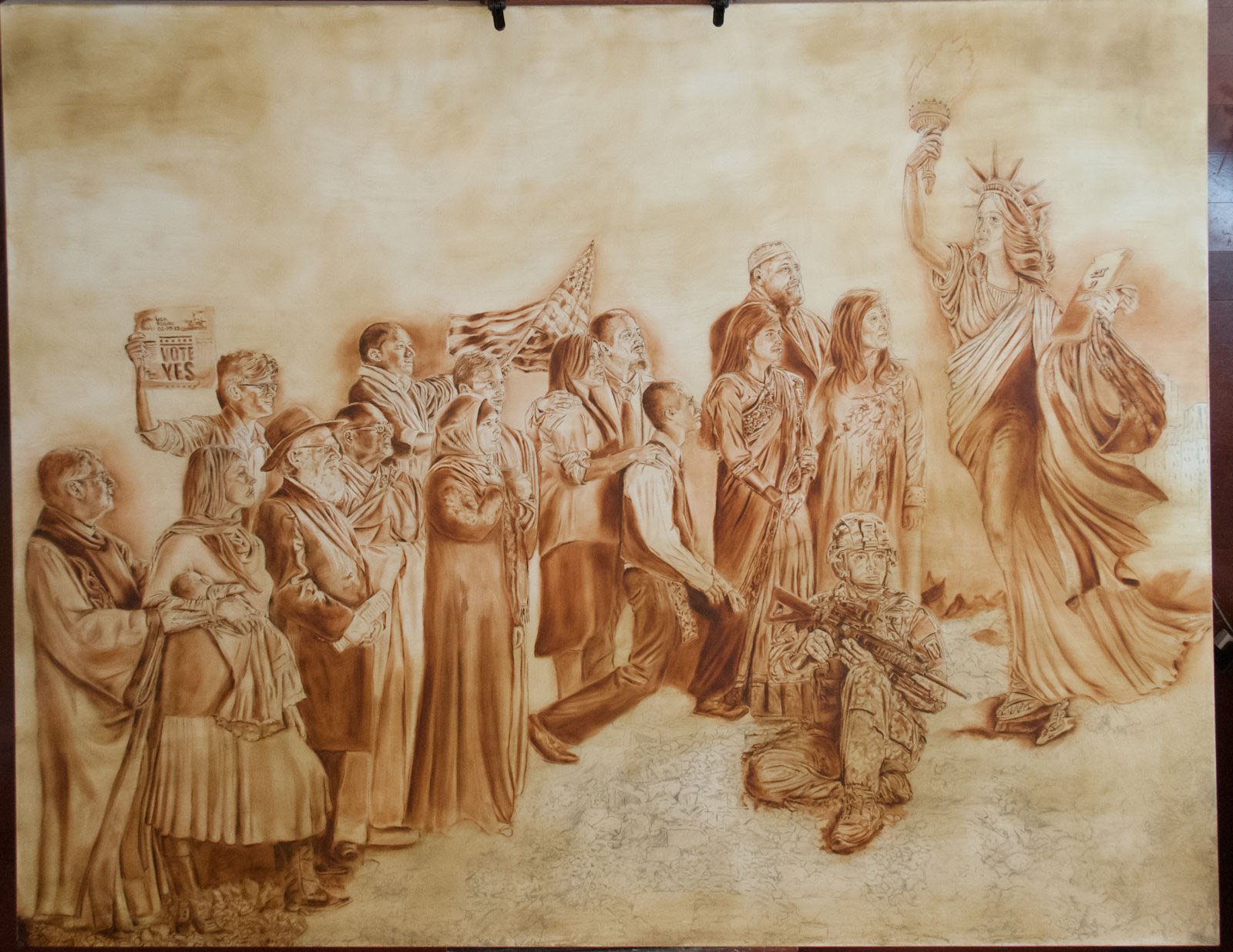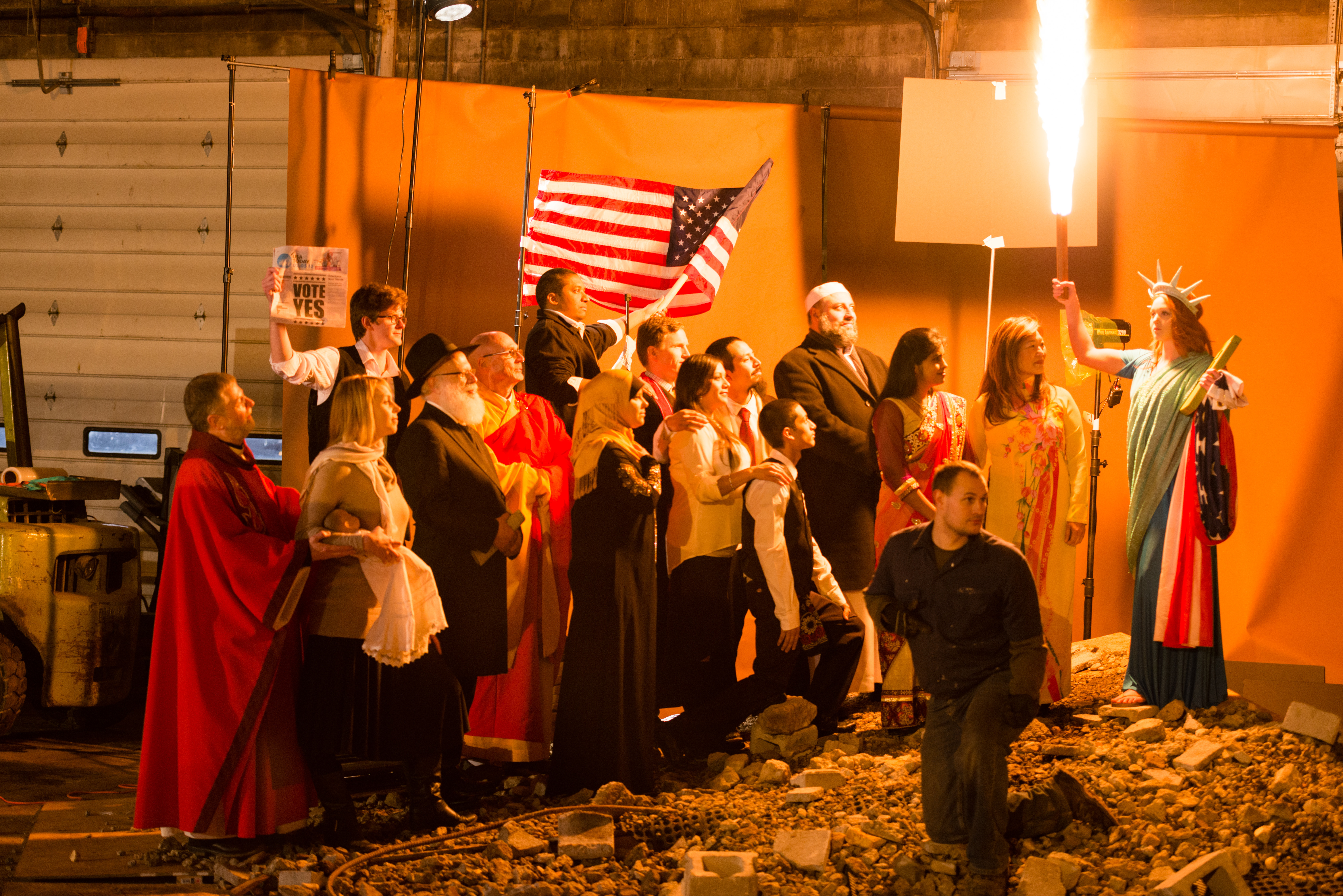Artist Terms and Techniques that can be found in The FREEDOM Painting
Realism (Representational
Art) (Romanticism) Representational art or realism is art that
looks like something that is real, like a person, object or landscape. There are differing degrees of realism from
“photo realism” where the artist provides extreme detail to represent the
subject faithfully and often looks very much like a photo, to impressionism
where the artist conveys something that is real but in a way that it looks
mostly like the subject but isn’t a direct copy of it. Sharon’s work is typically referred to as
Romantic Realism because her subjects are often enhanced to look as we imagine
they should or idealized (romanticized) to look as the could be.
Old Master’s
Technique This is a general reference
to the process of creating oil paintings primarily during the Renaissance by
artists who employed oil colors in layers with attention to light and shadow to
achieve good realism in their paintings.
Flemish Technique
(Layered Technique) There are
variations of this technique, but all –including Sharon’s – include 1. Pencil
or charcoal sketch on a good foundation (gesso) 2. Imprimatura layer, 3. At least one Umber
layer sometimes two or more also called the underpainting 4. The Verdaccio layer or Grisaille layer, 5
– 7 color layers which may also incorporate glazes. In this painting Sharon used 3 color layers
in most areas although some sections received 4 color layers including glazes.
Venetian Style –
This style associated with the Renaissance particularly in Venice, Italy is
characterized by a use of rich colors – particularly golds and reds – and an
emphasis on patterns and surfaces.
Sharon loves to paint flowing fabrics and this painting has numerous
robes and flowing gowns.
Composition -
Defined as the organization of the elements within the painting. In this painting Sharon has arranged the
subjects to draw the viewer’s eye across the key areas of the painting. Subtle placement of accessories and clothing
are used to coordinate different areas of the painting. i.e. The soldier’s
rifle in the same line as the Hispanic child’s arm. There are many examples of this throughout
the painting. Composition is not only
influenced by the placement of elements, it is also involves the use of color. Note the placement of the red items that
provide balance to the overall composition.
Stretcher The wooden frame that support the canvas. Made of high quality hard wood that is fitted
together so that it can be expanded should the canvas become too loose over
time. Wooden keys are used in the
corners to expand them when necessary.
The canvas is “stretched” and wrapped around the stretcher as tight as
possible , then stapled with stainless steel staples to provide the firm surface for the artist.
Canvas (Belgian Linen)-
Canvas material comes in a variety of types from very coarse cotton duct to
tightly woven Belgian Linen. Sharon uses
Belgian Linen because the tighter weave allows for more detail in the painting.
Gesso This provides the white ground that serves as
the base for the painting. There are
several types of gesso but the most popular are acrylic. The freedom painting used 2 layers of
traditional oil based gesso made with lead white and rabbit skin glue.
Imprimatura This is the first layer, after the sketch is
drawn on the canvas, in Sharon’s
modified Flemish technique. It is an
initial stain or toning of the canvas which is transparent and allows light to
pass through and reflect of the white gesso.
It helps establish value relationships from dark and light areas. Sharon’s imprimatura is made with raw sienna
diluted with turpentine.
Umber layer This is the second layer and is often
referred to as the underpainting. The
umber layer is painted with burnt umber and results in a monochromatic view
that establishes the tonality of the painting.
It is not uncommon for Sharon to do a second umber layer to darken the
tones of certain areas of the painting.
Underpainting see Umber layer - helps to establish the values of subsequent
color layers.
Oiling out This is the process of rubbing linseed oil
on dry areas of the painting that are going to be painted on again. The oil after applied is almost completely
wiped off with lint free paper towels and provides a more receptive surface for
those areas where Sharon is applying the next layer.
Verdaccio (dead
layer) This layer is also referred
to as the “dead” layer. It again is
completely monochromatic and is a light olive green. It establishes the full tonal range from dark
to light in the painting. When verdaccio
is finished you can see depth (dimension) in the painting. You often can see some of the verdaccio
peeking through later color layers in the finished painting – particularly in
flesh tones.
Color Layers - On top of the Verdaccio layer the artist then proceeds to build up very thin layers of color on the painting. A painting like this done in the Flemish technique can have as many as 10 or more very thin layers of transparent color paint.
Color Harmony This is probably the most overlooked property in a painting. If done well it simply looks right. If not – you know that something just isn’t
quite right with the painting. In this
painting, Sharon spent many hours planning the color palate and preparing just
the right color mix. The central theme
of the painting was planned by the very warm glow of Liberty’s torch. Nearly every area of the painting is lit from
that single very warm light source. As a
romantic realist, Sharon often changes or modifies certain colors to better
coordinate the painting. However she has
to stay true to the colors that result from light reflecting from other objects
onto flesh tones. The human eye will
adjust your perception of colors to make flesh tones look “normal” as your
memory knows it should look. But, when
for instance the protestant minister (the one with the Bible) is standing next
to a woman in the bright orange hijab it looks normal for his flesh tone to
contain those orange colors.
